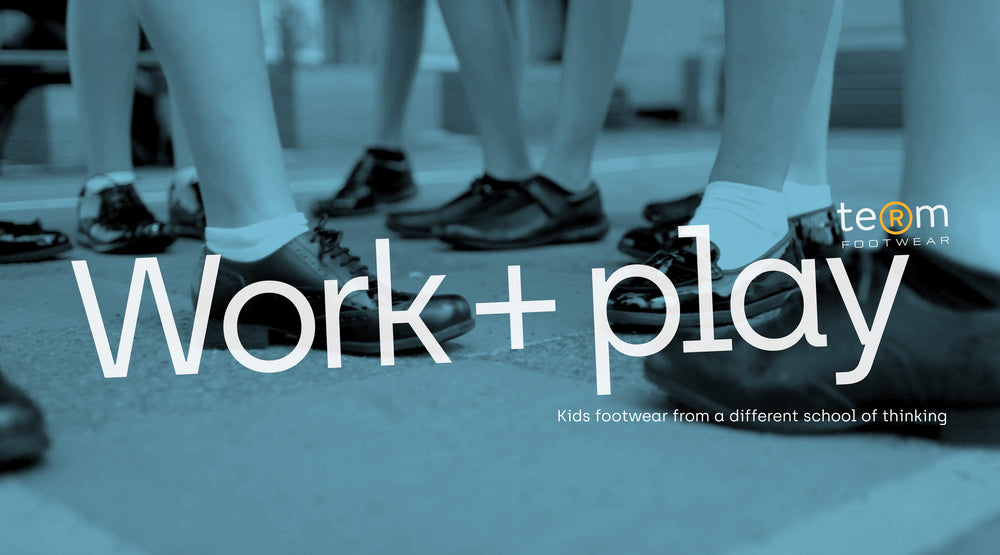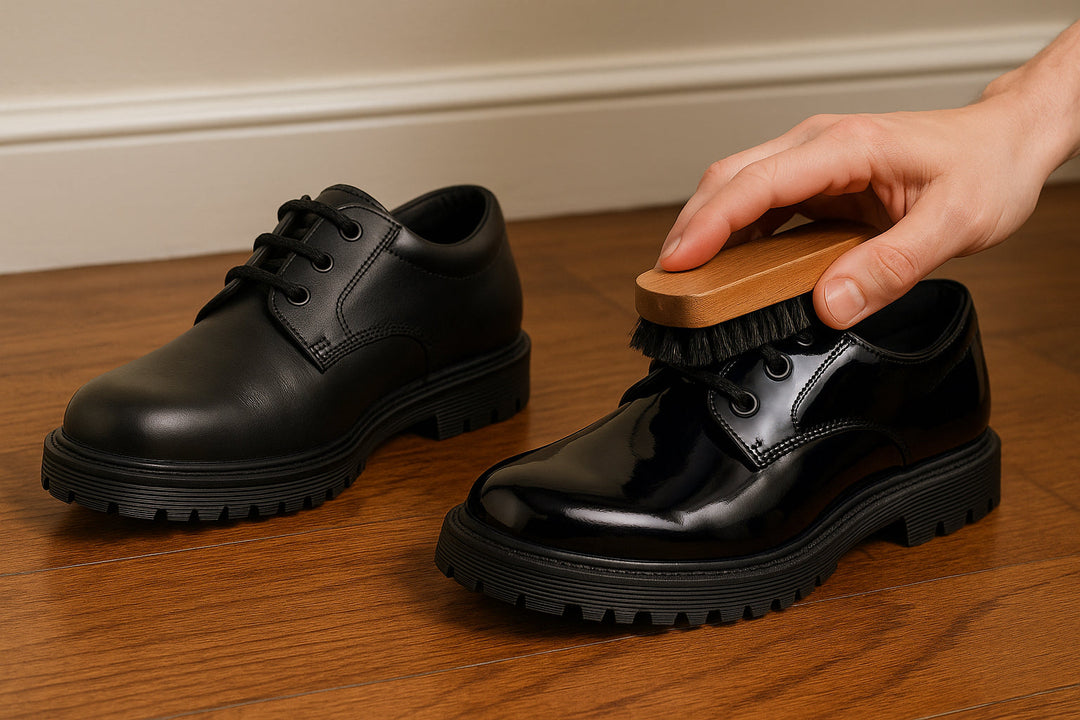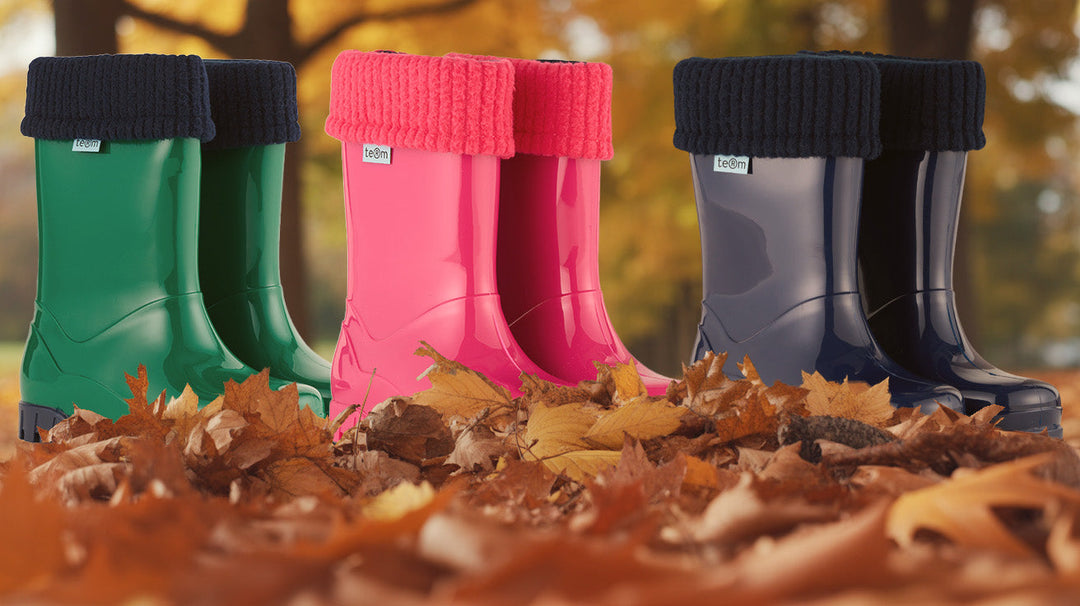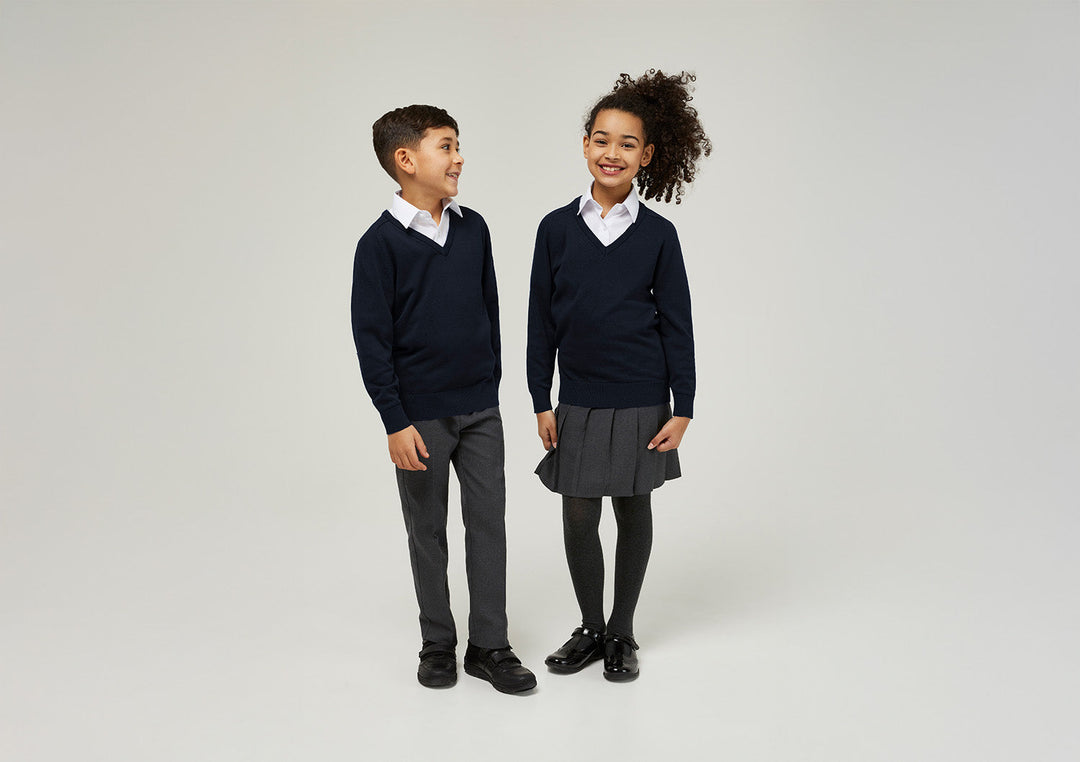Check Your School Shoes for a Good Fit This Half Term
This half term, it's time to check if your child's school shoes still provide a good fit. Finding the right size and style of shoes is crucial for their comfort and support.
At Term, we understand the importance of well-fitting school shoes that promote healthy feet development. Our range of Term school shoes combine durability and style, ensuring your child can confidently step into the classroom and playground.
With the growth spurts that children experience, it's essential to regularly check their shoe size. Ill-fitting shoes can lead to discomfort, blisters, and even foot problems in the long run. Take advantage of this half term break to measure your child's feet and evaluate the condition of their school shoes.
The Importance of Properly Fitting School Shoes
Properly fitting school shoes are crucial for children's overall well-being. Not only do they provide comfort and support, but they also contribute to healthy feet development. Children spend a significant amount of time in school, so it's important to ensure their footwear is not hindering their ability to learn and engage in physical activities.
Ill-fitting shoes can cause discomfort and pain, which can be distracting and affect their concentration. Moreover, shoes that are too tight or too loose may lead to blisters, corns, calluses, and other foot conditions. By investing in properly fitting school shoes, you are providing your child with the foundation for a healthy and active lifestyle.
Signs of Ill-Fitting School Shoes
It's important to be aware of the signs that indicate your child's school shoes do not fit properly. Some common signs include:
- Toe Overhang: If your child's toes are hanging over the edge of the shoe, it's a clear indication that the shoes are too small.
- Heel Slippage: If your child's heels are slipping out of the shoes while walking, the shoes are too big.
- Redness or Blisters: If your child develops redness or blisters on their feet after wearing the shoes, it's a sign of friction caused by improper fit.
- Uneven Wear: Uneven wear on the soles of the shoes may suggest that they are not providing proper support and stability.
Benefits of Wearing Properly Fitting School Shoes
Wearing properly fitting school shoes offers a range of benefits for children's foot health and overall well-being. Here are some key advantages:
- Comfort: Well-fitting shoes ensure that your child's feet are comfortable throughout the day, allowing them to focus on their studies and activities.
- Support: Properly fitting shoes provide the necessary support for growing feet, helping to prevent foot and ankle pain.
- Posture and Alignment: Good-fitting shoes contribute to proper posture and alignment, reducing the risk of back and leg problems in the long run.
- Foot Development: Well-designed school shoes support healthy foot development, especially during crucial growth phases.
- Durability: Investing in quality school shoes means they are more likely to withstand the wear and tear of daily activities, saving you money in the long run.
Measuring Your Child's Feet for the Right Size
To ensure your child's school shoes fit correctly, it's important to measure their feet regularly. Follow these steps to measure their feet accurately:
- Use a Piece of Paper: Place a piece of paper on a hard surface and have your child stand on it.
- Mark the Toes and Heel: Use a pen or pencil to mark the position of their longest toe and the back of their heel.
- Measure the Distance: Use a ruler to measure the distance between the two marks. This measurement will help determine the correct shoe size.
Finding the Right Shoe Style for Your Child's Feet
Apart from finding the right size, it's also important to consider the shoe style that suits your child's feet. Here are some factors to consider:
- Arch Support: Look for shoes that provide adequate arch support, especially if your child has high arches or flat feet.
- Breathability: Opt for shoes made from breathable materials to prevent excessive sweating and odour.
- Closure Type: Choose a closure type that is secure and adjustable, such as laces, Velcro, or buckles.
- Flexibility: Look for shoes that offer flexibility in the sole, allowing natural foot movements.
Tips for Trying on School Shoes
When trying on school shoes, keep the following tips in mind:
- Try on Both Shoes: Always try on both shoes to ensure they fit equally well on both feet.
- Leave Some Wiggle Room: There should be a thumb's width of space between the longest toe and the front of the shoe.
- Check for Rubbing: Walk around in the shoes to check for any rubbing or discomfort.
- Observe the Fit: Look for a snug fit around the heel and midfoot, with enough space for the toes to move freely.
- Consider Socks: If your child wears specific socks with their school shoes, make sure to bring them along for the fitting.
How to Check for a Good Fit
To check if your child's school shoes provide a good fit, pay attention to the following:
- Toe Room: There should be enough room for the toes to wiggle, without being too tight or cramped.
- Heel Fit: The shoes should securely hold the heel in place, without any slippage.
- Arch Support: The shoes should provide adequate support to the arches of the feet, without causing discomfort.
- Width: The shoes should be wide enough to accommodate the natural width of your child's feet, without squeezing or pinching.
Common Mistakes to Avoid When Fitting School Shoes
When fitting school shoes, it's important to avoid these common mistakes:
- Buying Shoes That Are Too Big: Some parents mistakenly buy shoes that are too big, thinking they will last longer. However, this can lead to discomfort and instability.
- Assuming Shoe Sizes Are Universal: Sizes can vary between different shoe brands, so always measure your child's feet and refer to the brand's size chart.
- Not Considering Growth Room: While it's important to have some room for growth, buying excessively large shoes can compromise comfort and support.
- Ignoring Your Child's Feedback: Pay attention to your child's feedback about the fit and comfort of their shoes. They are the best judges of how the shoes feel on their feet.
Extending the Life of Your Child's School Shoes
To ensure the longevity of your child's school shoes, follow these tips:
- Rotate Shoes: Encourage your child to alternate between two pairs of school shoes. This allows each pair to dry out and prevents excessive wear.
- Cleaning and Maintenance: Regularly clean and polish the shoes to keep them in good condition.
- Storage: Store the shoes in a cool and dry place to prevent damage from moisture or extreme temperatures.
- Replace When Necessary: Keep an eye on the condition of the shoes and replace them when they show signs of excessive wear or damage.
Importance of Regular Shoe Checks
This half term, take the opportunity to check your child's school shoes for a good fit. Properly fitting school shoes are essential for their comfort, support, and overall foot health. By regularly measuring their feet, considering the shoe style, and checking for a good fit, you can ensure your child's school shoes provide the best foundation for their active days ahead.
Investing in quality school shoes is an investment in your child's well-being. With the right shoes, they can confidently navigate the school day, focusing on their studies and enjoying their time on the playground. So, this half term holiday, make sure to check your child's school shoes and give them the gift of proper fit and comfort. Your child's feet will thank you!





